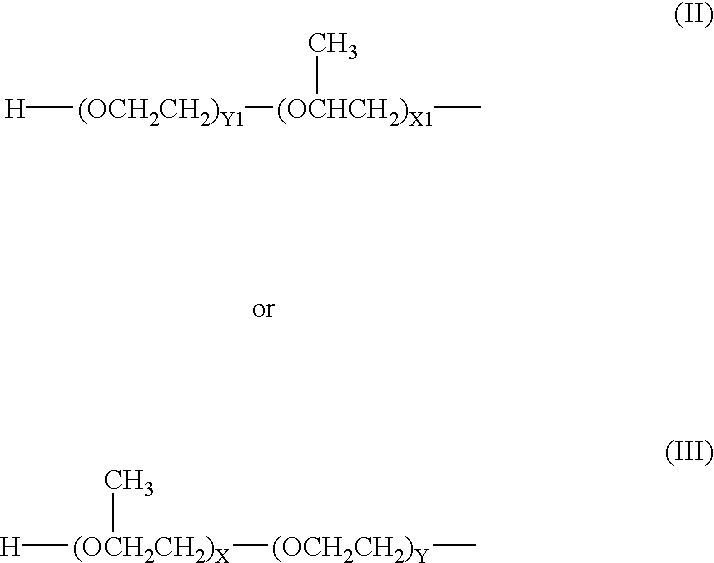Membrane which comprises a blend of a polysulphone or a polyether sulphone and polyethylene oxide/polypropylene oxide substituted ethylene diamine
a polysulphone and polypropylene oxide technology, applied in the field of membranes, can solve the problems of deterioration in performance, poor hydrophilicity, and high cost of methods of modifying hydrophobic membranes to produce a more hydrophilic surfa
- Summary
- Abstract
- Description
- Claims
- Application Information
AI Technical Summary
Problems solved by technology
Method used
Image
Examples
example 1
A polyether sulphone sold under the Trade Name Ultrason E and an ethylene oxide / propylene oxide copolymer of molecular weight 18,000 (Tetronic 1307) were dissolved in n-methylpyrrolidone (NMP) and stirred until a clear solution was obtained. The solution was formed into a hollow fibre membrane by a spinning process. The weight composition of the solution was 25% polyether sulphone(PES). 20% ethylene oxide / propylene oxide copolymer and 55% n-methylpyrrolidone. The membranes formed were washed in water for two day after formation.
The membrane made according to the Example had a molecular weight cut off of approximately 50,000. It was tested for anti-fouling properties in a milk filtration test in which milk was filtered through the membrane and the clean water flux measured. The membrane was cleaned by washing with clean water at the end of each day and the clean water flux measured.
The results are shown in FIG. 1. The initial clean water flux was 230 1 m.sup.-2 hr.sup.-1 / bar.sup.-1....
PUM
| Property | Measurement | Unit |
|---|---|---|
| pore size | aaaaa | aaaaa |
| molar ratio | aaaaa | aaaaa |
| water soluble | aaaaa | aaaaa |
Abstract
Description
Claims
Application Information
 Login to View More
Login to View More - R&D
- Intellectual Property
- Life Sciences
- Materials
- Tech Scout
- Unparalleled Data Quality
- Higher Quality Content
- 60% Fewer Hallucinations
Browse by: Latest US Patents, China's latest patents, Technical Efficacy Thesaurus, Application Domain, Technology Topic, Popular Technical Reports.
© 2025 PatSnap. All rights reserved.Legal|Privacy policy|Modern Slavery Act Transparency Statement|Sitemap|About US| Contact US: help@patsnap.com



